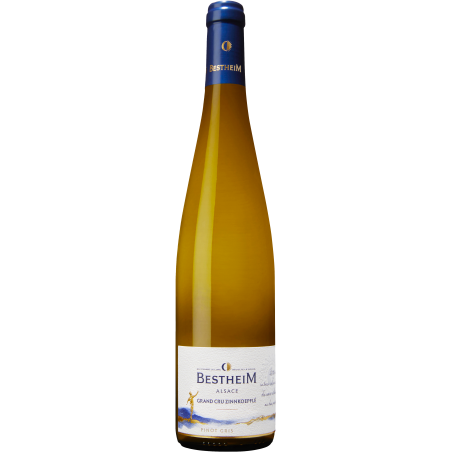What wine should you serve with a veal blanquette?
What is a good wine to pair with a veal blanquette? Bestheim follows a traditional recipe for veal blanquette with advice on the wine to enjoy with it!
GOURMET RECIPE: PAUL BOCUSE’S TRADITIONAL VEAL BLANQUETTE
Veal blanquette is a firm favourite in France. Although its origin is unknown, this traditional recipe rapidly spread throughout the country, giving rise to a number of different interpretations of the dish (with or without mushrooms, for example). We would like to share the renowned chef Paul Bocuse’s recipe with you, and give you our advice for the wine to pair with it.
Ingredients to serve six:
- 1.5 kg veal flank
- 6 sprigs of flat parsley
- 1 bay leaf
- 2 large onions
- 4 carrots
- 1 clove
- 2 chicken stock cubes
- 1 large leek
- 10 g butter
- 10 g flour
- 500 g crème fraîche
- 3 sprigs of chervil
- Fine salt
- Freshly-ground pepper
METHOD:
Cut the veal into approximately 50-g pieces and place them in a large saucepan. Add water to cover and bring to the boil on a high heat. Using a ladle, gradually remove foam and residue that rises to the surface.
Tie 3 sprigs of parsley together with the bay leaf. Peel the onions and cut into eight. Cut the carrots into three pieces, then cut each piece lengthwise into two. Add the above to the saucepan with the clove and the stock cubes. Leave to simmer for 40 minutes.
Remove the root and the green leaves from the leek. Slice the first layer of the leek down its entire length and remove it. Cut the leek diagonally into 2-3 centimetre sections.
Trim the tops of the turnips down to 10 cm. Scrape away any mud from the top of the turnips then remove the roots. Peel and wash them, along with the pieces of leek.
Remove the meat and vegetables from the saucepan with a slotted spoon. Discard the clove and the bouquet garni. Add the turnips and leek, and continue to cook for 17 minutes on a low heat. Remove the vegetables and reduce the liquid until 2 ladles of stock remain.
Beat the butter until soft; add the flour and continue to beat until fully incorporated. Melt a little of the butter in the ladle with some of the stock, and whisk as you pour it into the saucepan. Continue to gradually add the butter and flour mixture in this way.
Pour the cream into the saucepan and stir for 2 to 3 minutes. Put the meat back in, and allow to simmer for 10 minutes on a low heat. Check the seasoning, add salt and pepper if wished.
Strip the leaves from 3 sprigs of parsley, and chervil. Add all the vegetables, and continue to simmer for a few minutes. Serve on warm plates. Garnish with parsley and chervil.
FOOD AND WINE PAIRING: PINOT GRIS GRAND CRU ZINNKOEPFLÉ
Which wine should you serve with a veal blanquette?
Firstly, we recommend choosing a white wine; as the sauce is white, the accepted wisdom that red wine should always be served with meat does not hold true here. Wines with strong tannins (as is the case for many reds) are not a good match for the crème fraîche in this recipe. Of course, good pairings of veal blanquette with red wine do exist. But we would like to make another suggestion, chosen from the white wines that are perfect for enhancing this gourmet recipe.
We recommend a Pinot Gris Grand Cru Zinnkoepflé. This white wine is a magnificent golden yellow colour, with great legs. Its powerful, aromatic nose is characteristic of this great terroir. It also presents notes of candied fruits, apricot and pineapple. The palate deftly balances punchy freshness with roundness.
This Alsace wine is expressive and sufficiently powerful (if too light, a white wine would not do justice to this hearty country dish). Less dry than a Riesling, yet without excessive sweetness, it enhances this white meat recipe with finesse and just the right amount of acidity.
Bon appétit and enjoy!
Source: Best of Paul Bocuse by Christophe Muller.

